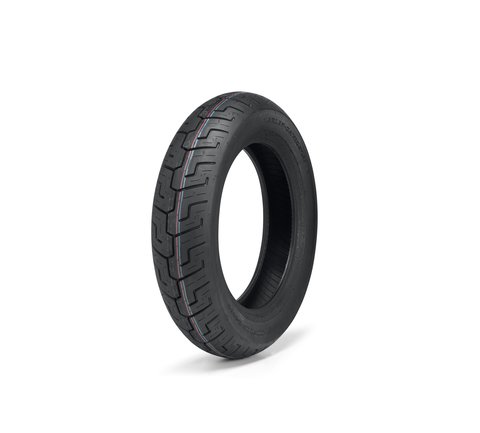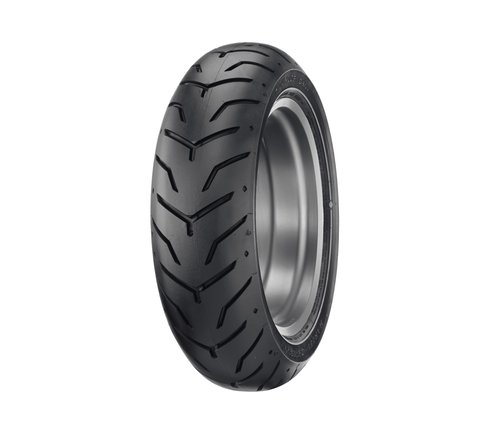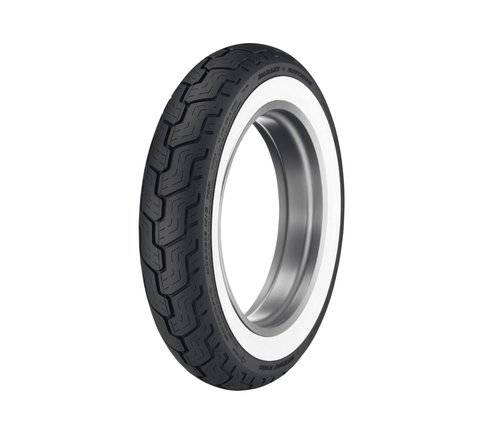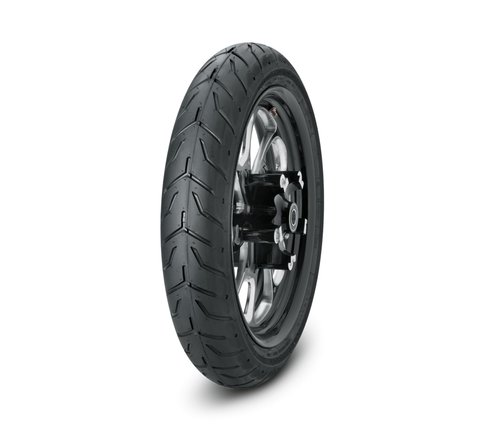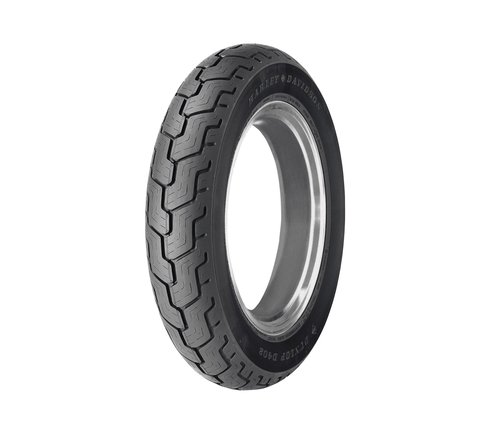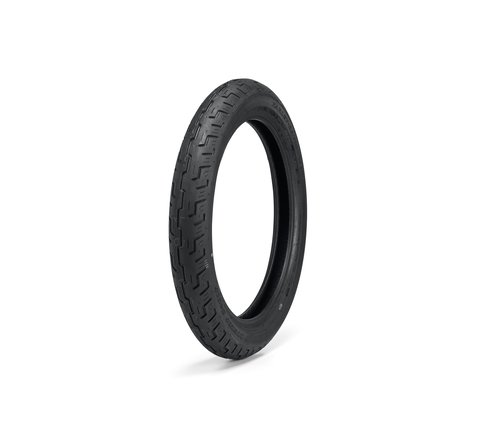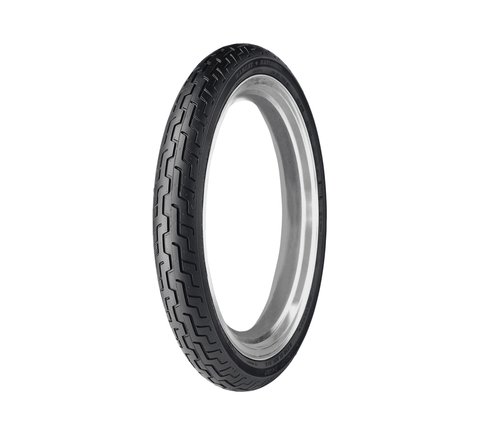For motorcycle riders of all types, from everyday enthusiasts to occasional weekend warriors, understanding motorcycle tire longevity and maintenance is key to ensuring an enjoyable riding experience.
This guide to motorcycle tire age and lifespan addresses some of the most frequently asked questions about motorcycle tires, providing important and practical insights to protect yourself and your investment over the long run.
How Long Do Motorcycle Tires Last?
Manufacturers typically recommend replacing motorcycle tires that are more than six years old. However, there’s a considerable difference between how long it’s been since a tire was manufactured and how much it has aged.
Ultimately, the lifespan of motorcycle tires—and how fast they age — is influenced by several factors, including riding style, tire type, road conditions, how tires are stored and how well they are maintained. For example, a new tire, parked or stored next to an electric motor or transformer (or other ozone-producing device) can incur irreversible damage to the sidewalls and tread in the form of cracking within a short time. The same goes with a motorcycle that’s being stored outside and exposed to intense UV.
More generally speaking, tires on motorcycles, especially those on high-performance models like many Harley-Davidsons, tend to have a shorter lifespan compared to car tires.
This fact, however, should come as a little surprise. Motorcycle tires are more often subject to more demanding conditions, such as greater speed-to-weight ratios and varied road surfaces, all of which can accelerate tire wear.
Meanwhile, different tires’ contact footprints are a significant factor in their lifespans. In the case of car tires, that footprint is much larger—and there are four, not two, larger tires with flatter treads in contact with the road at virtually all times. In contrast, on a motorcycle, the contact footprint is considerably smaller, meaning that the tire’s contact patch receives considerably more stress than on a car tire.
Ultimately, there’s little use in comparing the mileage of a family sedan’s tires and a high-performance motorcycle. However, this information does shed light on the factors that influence the lifespan and aging of motorcycle tires.
Riders who favor a more aggressive style, involving rapid acceleration and hard braking, may find their tires wearing out more quickly. Likewise, the conditions of the roads traveled upon will affect how long tires last. Additionally, the type of tire plays a significant role—sportier tires and those with higher speed ratings might offer enhanced grip but could wear out faster than touring types.
How Can I Get the Best Mileage from My Motorcycle’s Tires?
To obtain the best mileage from the motorcycle tires of your choice, observe the following guidelines:
- Obey the speed limit
- Avoid rapid acceleration and hard braking
- Maintain recommended tire pressures
- Do not overload your bike with weight or use it to tow a trailer
How Many Miles Do Motorcycle Tires Last?
On average, motorcycle tires can last anywhere from 3,000 to 15,000 miles. But, as with gauging tires’ typical lifespan, estimating the exact mileage at which motorcycle tires should be replaced is challenging, as it varies greatly based on the tire's design and the rider's habits. Riders should regularly inspect their tires for signs of wear and replace them as needed to ensure optimal performance and safety.
When Should I Replace Motorcycle Tires?
Knowing when to replace motorcycle tires is important for maintaining the safety and performance of your motorcycle. The most obvious indicator of tire wear to inspect is the tread depth. Tires should be replaced once the tread wears down to the legal limit, which is typically 1/32nd of an inch. Riders can use a tread depth gauge to measure this.
Additionally, visible signs such as cracks, cuts, bulges, or significant uneven wear are clear indicators that the tires need replacement. It's also important to consider the tire's age, as mentioned earlier, since rubber compounds degrade over time even if the tread appears to be sufficient.
Can I Extend the Life of My Motorcycle’s Tires?
Regular motorcycle maintenance and inspection, including routinely checking for wear and damage, as well as proper storage can significantly extend their lifespan. When storing your bike, especially for extended periods, keep the health of your tires in mind by:
- Storing it in a space with a temperature of 32-77°F (0-25°C)
- Ensuring the storage area is dry and well-ventilated to stop any buildup of moisture or condensation
- Keeping tires away from direct sunlight
- Storing tires away any ozone producing electrical items such as generators, motors, and fluorescent lamps. Solvents, fuels, lubricants, chemicals, acids, and disinfectants also need to be kept away from the tires
- When storing tires for long periods, rotate the tires every 4 weeks to avoid shape deformation
To learn more about the different types of tires available and how to take proper care of yours, check out our comprehensive Motorcycle Tires 101 guide.
Browse popular Tires for your Harley-Davidson motorcycle
For Harley-Davidson riders, understanding these key aspects of tire longevity and maintenance is not just about ensuring a smooth ride; it's about supporting safety and achieving peak performance.
Understanding how long motorcycle tires last requires regularly monitoring your tires and being proactive in their maintenance. To find more expert advice on tire replacement as well as options for new motorcycle tires, head to your local Harley-Davidson® dealer.
Learn about Tire Maintenance
Explore the latest Parts & Apparel
Andorra - español
Argentina – español
Australia – English
Belgique – français
België – Nederlands
Brasil – português
Canada – English
Canada – français
Česká Republika – Česky
Chile – español
中国 - 中文
Colombia – español
Danmark – dansk
Deutschland – deutsch
España – español
France – français
Hong Kong, China – English
India – English
Indonesia – Bahasa Indonesia
Ireland – English
Italia – italiano
Japan – Japanese
Jordan – English
Korea – 한국어
العربية – دولة الكويت
Kuwait – English
Luxembourg – français
Macau, China – English
Magyarország – magyar
Malaysia – English
México – español
Middle East - English
Middle East - العربية
Myanmar – English
Nederland – nederlands
New Zealand – English
Norge – norsk
Österreich – deutsch
Philippines – English
Polska – polski
Portugal – Português
Puerto Rico - English
Qatar – English
România – English
العربية – المملكة العربية السعودية
Saudi Arabia – English
Schweiz – deutsch
Singapore – English
Slovensko – Česky
South Africa – English
Suisse – français
Suomi - Suomeksi
Sverige - Svensk
Svizzera – italiano
Taiwan, China - 中文
Thailand - Thai
Türkiye – Türk
العربية - الامارات العربية المتحدة
United Arab Emirates – English
United Kingdom – English
United States – English
Vietnam – Vietnamese
America latina - española
African Markets – English
Asia Pacific Markets - English
Česká Republika/Slovensko – Česky
European Markets - English
Kuwait – English
Middle East - English
Myanmar – English
Česká Republika/Slovensko – Česky
العربية - الامارات العربية المتحدة
Sverige - Svensk
Malaysia – English
Portugal – Português
Slovensko – Česky
Saudi Arabia – English
Luxembourg – français
Suomi - Suomeksi
Chile – español
Česká Republika – Česky
Suisse – français
België – Nederlands
Colombia – español
Argentina – español
Japan – Japanese
Türkiye – Türk
Asia Pacific Markets - English
India – English
United Arab Emirates – English
Norge – norsk
European Markets - English
Nederland – nederlands
United Kingdom – English
African Markets – English
Schweiz – deutsch
Singapore – English
العربية – دولة الكويت
Canada – français
Österreich – deutsch
New Zealand – English
中国 - 中文
Qatar – English
România – English
America latina - española
España – español
Macau, China – English
العربية – المملكة العربية السعودية
Svizzera – italiano
Danmark – dansk
Brasil – português
Canada – English
Taiwan, China - 中文
Thailand - Thai
Deutschland – deutsch
Andorra - español
Ireland – English
France – français
Jordan – English
Puerto Rico - English
Belgique – français
Korea – 한국어
United States – English
Vietnam – Vietnamese
Philippines – English
Italia – italiano
Polska – polski
Middle East - العربية
Hong Kong, China – English
South Africa – English
México – español
Australia – English
Magyarország – magyar
Indonesia – Bahasa Indonesia
-
Recommended 91 octane (95 RON) or higher fuel (R+M)/2.
-
Values shown are nominal. Performance may vary by country and region.
-
Standard and optional fuel systems may vary by country.
-
See motorcycle owner’s manual for complete details.
-
Estimated from fuel economy tests on a sample motorcycle from the corresponding family conducted by Harley-Davidson under ideal laboratory conditions. Not all motorcycle models undergo fuel economy testing. Fuel economy and mileage may vary among motorcycle models within a family. Your mileage may vary depending on your personal riding habits, weather conditions, trip length, vehicle condition and vehicle configuration and other conditions. Break-in mileage may vary.
-
Prices listed are the Manufacturer’s Suggested Retail Prices for base models. Options such as color are available at additional cost. Prices exclude tax, title, licensing, registration fees, destination charges, surcharges (attributable to raw materials costs in the product supply chain), added accessories, and additional dealer charges, if any, and are subject to change. Harley-Davidson reimburses dealers for performing manufacturer-specified pre-delivery inspection and setup tasks. Dealer prices may vary.
-
Measurement reflects 180 lb. (81.7 kg) operator weight.
-
North America security system includes immobilizer; outside North America the security system includes immobilizer and siren.
-
Standard and optional wheels may vary by country and region.
-
Financing Offer available only on new 2024 Harley-Davidson® Ultra Limited® and 2024 Road Glide® 3 motorcycles financed through Eaglemark Savings Bank (ESB) and is subject to credit approval. Not all applicants will qualify. 1.49% APR offer is available only to high credit tier customers at ESB and only for a 48-month term. The APR may vary based on the applicant’s past credit performance and the term of the loan. For example, a 2024 Ultra Limited® model in Billiard Gray with an MSRP of $32,499, no down payment and amount financed of $32,499, 48-month repayment term, and 1.49% APR results in monthly payments of $697.86. Also, for example, a 2024 Road Glide® 3 model in Atlas Silver Metallic with an MSRP of $35,999, no down payment and amount financed of $35,999, 48-month repayment term, and 1.49% APR results in monthly payments of $773.02. In these examples, customer is responsible for applicable taxes, title, licensing fees and any other fees or charges at the time of sale. APR is calculated according to the simple interest method. Not valid in conjunction with other offers. This Financing Offer is valid during the period of January 30, 2025 - March 31, 2025. Other terms, conditions, and limitations may apply. Dealer participation may vary. Financing offer is subject to change or cancellation at anytime.
-
Financing Offer available for Used Harley‑Davidson® motorcycles financed through Eaglemark Savings Bank (ESB) and is subject to credit approval. Not all applicants will qualify. 7.44% APR offer is available on Used Harley‑Davidson® motorcycles to high credit tier customers at ESB and only for up to a 60 month term. The APR may vary based on the applicant’s past credit performance and the term of the loan. For example, a 2023 Softail® Standard motorcycle in Vivid Black with a sale price of $14,399, no down payment and amount financed of $14,399, 60 month repayment term, and 7.44% APR results in monthly payments of $288.12. In this example, customer is responsible for applicable taxes, title, licensing fees and any other fees or charges at the time of sale. APR is calculated according to the simple interest method. Not valid in conjunction with other offers. Other terms, conditions, and limitations may apply. Dealer participation may vary. Financing offer is subject to change or cancellation at any time. See your Harley‑Davidson® Dealership for details.
-
$0 Down and as Low as 3.99% APR
*Financing Offer available only on select, untitled 2022 and 2023 Harley-Davidson® Grand American Touring, Adventure Touring, Trike, CVO™, Softail® and Custom motorcycles financed through Eaglemark Savings Bank and is subject to credit approval. Touring models Road King® Special and Electra Glide® Highway King are excluded. Harley-Davidson® Anniversary and Icons Motorcycle Collection are excluded. Not all applicants will qualify as the Annual Percentage Rate (APR) will vary based on the applicant’s past credit performance and the term of the loan. Financing offer is available only for up to a 60-month term. For example, a 2023 Street Glide® Special motorcycle in Bright Billiard Blue/Billiard Gray with Chrome Finish and an MSRP of $29,499, no down payment and amount financed of $29,499, 60-month repayment term, and 3.99% APR results in monthly payments of $543.14. In this example, customer is responsible for applicable taxes, title, licensing fees and any other fees or charges at the time of sale. APR is calculated according to the simple interest method. Not valid in conjunction with other offers. Customer must take delivery by October 31, 2024. This Financing Offer is valid during the period of August 27, 2024, to October 31, 2024. Other terms, conditions, and limitations may apply. Dealer participation may vary. Financing offer is subject to change or cancellation at anytime. See your Harley-Davidson® Dealership for details.CUSTOMIZATION CREDIT
**Up to $2,000 incentive valid for in-dealership purchase of Genuine Harley-Davidson® Parts & Accessories and/or Apparel & Licensed merchandise in connection with the purchase of select Grand American Touring, Trike and Softail motorcycles valid at participating Harley-Davidson® dealerships within the U.S. including Alaska and Hawaii. Offer valid toward the purchase of select new, untitled 2022 or 2023 Harley-Davidson® Grand American Touring, Trike and Softail motorcycles available and in stock at participating H-D® dealers between August 27, 2024 and October 31, 2024. Offer may not be available in all states. Touring models Road King® Special, Road Glide®, Street Glide® and Electra Glide® Highway King are excluded. Harley-Davidson® Anniversary, CVO™, Icons Motorcycle Collection and Police Duty Motorcycles are excluded. Offer cannot be redeemed for cash or cash equivalent. Offer is subject to change at any time without notice. Void where prohibited or restricted by law. Dealer participation may vary. Additional restrictions apply, see your Harley-Davidson® Dealership for details. -
Financing Offer available only on new Harley-Davidson® motorcycles financed through Eaglemark Savings Bank (ESB) and is subject to credit approval. Not all applicants will qualify. This 11.84% offer is available on new Harley Davidson® motorcycles to high credit tier customers at ESB and only for up to an 84-month term. The APR may vary based on the applicant’s past credit performance and the term of the loan. For example, a 2024 Pan America® 1250 Special motorcycle in Billiard Gray with an MSRP of $19,999, 10% down payment and amount financed of $17,999.10, 84-month repayment term, and 11.84% APR results in monthly payments of $316.20. In this example, customer is responsible for applicable taxes, title, licensing fees and any other fees or charges at the time of sale. APR is calculated according to the simple interest method. Not valid in conjunction with other offers. Other terms, conditions, and limitations may apply. Dealer participation may vary. Financing offer is subject to change or cancellation at any time. See your Harley-Davidson® Dealership for details.
-
Financing Offer available only on new Harley-Davidson® motorcycles financed through Eaglemark Savings Bank (ESB) and is subject to credit approval. Not all applicants will qualify. This 12.74% offer is available on new Harley Davidson® motorcycles to high credit tier customers at ESB and only for up to a 96-month term. The APR may vary based on the applicant’s past credit performance and the term of the loan. For example, a 2024 Street Glide® motorcycle in Billiard Gray with an MSRP of $25,999, 10% down payment and amount financed of $23,399.10, 96-month repayment term, and 12.74% APR results in monthly payments of $389.88. In this example, customer is responsible for applicable taxes, title, licensing fees and any other fees or charges at the time of sale. APR is calculated according to the simple interest method. Not valid in conjunction with other offers. Other terms, conditions, and limitations may apply. Dealer participation may vary. Financing offer is subject to change or cancellation at any time. See your Harley-Davidson® Dealership for details.
-
Prices listed are the Manufacturer’s Suggested Retail Prices (MSRP). MSRP excludes tax, title, licensing, registration fees, destination charges (including freight, handling and processing), surcharges (attributable to raw materials cost in the product supply chain), dealer-added accessories and installation, and additional dealer charges, if any. Harley-Davidson charges dealers for destination charges (including freight, handling and processing) and may make a profit on those charges. Harley-Davidson reimburses dealers for performing manufacturer-specified pre-delivery inspection and setup tasks. Dealer prices may vary.
-
Financing Offer available only on new Harley‑Davidson® motorcycles financed through Eaglemark Savings Bank (ESB) and is subject to credit approval. Not all applicants will qualify. 5.99% APR offer is available only to high credit tier customers who have completed a Riding Academy, Skilled Riders, MSF or other state accredited course within 180 days of application date and only for up to a 60 month term. The APR may vary based on the applicant’s past credit performance and the term of the loan. For example, a 2025 Heritage Classic motorcycle in Billard Gray with an MSRP of $22,999, 10% down payment and amount financed of $20,699.10, 60 month repayment term, and 5.99% APR results in monthly payments of $400.08. In this example, customer is responsible for applicable taxes, title, licensing fees and any other fees or charges at the time of sale. APR is calculated according to the simple interest method. Not valid in conjunction with other offers. Other terms, conditions, and limitations may apply. Dealer participation may vary. Financing offer is subject to change or cancellation at anytime. See your Harley-Davidson® Dealership for details.
-
Financing Offer available only on used Harley‑Davidson motorcycles financed through Eaglemark Savings Bank (ESB) and is subject to credit approval. Not all applicants will qualify. 6.79% APR offer is available only to high credit tier customers who have completed a Riding Academy, Skilled Riders, MSF or other state accredited course within 180 days of application date and only for up to a 60 month term. The APR may vary based on the applicant's past credit performance and the term of the loan. For example, a 2023 Softail Standard motorcycle in Vivid Black with a sale price of $14,399, no down payment and amount financed of $14,399, 60 month repayment term, and 6.94% APR results in monthly payments of $283.69. In this example, customer is responsible for applicable taxes, title, licensing fees and any other fees or charges at the time of sale. APR is calculated according to the simple interest method. Not valid in conjunction with other offers. Other terms, conditions, and limitations may apply. Dealer participation may vary. Financing offer is subject to change or cancellation at anytime. See your Harley-Davidson® Dealership for details.
-
Visit H-DVisa.com for details. The creditor and issuer of the Harley‑Davidson® Visa® card is U.S. Bank National Association, pursuant to a license from Visa U.S.A. Inc.
-
Financing offer available only to Active United States Military personnel and only on Harley‑Davidson® motorcycles financed through Eaglemark Savings Bank and is subject to credit approval. Not all applicants will qualify. No Money Down offer is available only to well-qualified credit tier applicants. 8.54% APR offer is available only to the highest credit tier applicants and only for up to 60 months term. The APR and down payment may vary based on the applicant’s past credit performance and the term of the loan. For example, a 2023 Street Bob® motorcycle in Billard Gray with an MSRP of $17,199, no down payment and amount financed of $17,199, 60 month repayment term and 8.54% APR results in monthly payments of $353.20. In this example, customer is responsible for applicable taxes, title, licensing fees and any other fees or charges at the time of sale. APR is calculated according to the simple interest method. Not valid in conjunction with other offers. Other terms, conditions and limitations may apply. Financing offer is subject to change or cancellation at any time. See your Harley‑Davidson® Dealership for details. Active Military includes: United States Army, Navy, Marine, Air Force, Coast Guard, National Guard and Reserves.
-
Financing Offer available only on new Harley-Davidson® motorcycles financed through Eaglemark Savings Bank (ESB) and is subject to credit approval. Not all applicants will qualify. This 11.14% offer is available on new Harley Davidson® motorcycles to high credit tier customers at ESB and only for up to an 84-month term. The APR may vary based on the applicant’s past credit performance and the term of the loan. For example, a 2025 Nightster® motorcycle in Billiard Gray with an MSRP of $9,999 a 10% down payment and amount financed of $8,999.10, 84-month repayment term, and 11.14% APR results in monthly payments of $154.75. In this example, customer is responsible for applicable taxes, title, licensing fees and any other fees or charges at the time of sale. APR is calculated according to the simple interest method. Not valid in conjunction with other offers. Other terms, conditions, and limitations may apply. Dealer participation may vary. Financing offer is subject to change or cancellation at any time. See your Harley-Davidson® Dealership for details.
-
Financing Offer available only on new 2024 Street Bob® 114 Harley-Davidson® motorcycles financed through Eaglemark Savings Bank (ESB) and is subject to credit approval. Not all applicants will qualify. 4.35% APR offer is available only to high credit tier customers at ESB and only for a 48-month term. The APR may vary based on the applicant’s past credit performance and the term of the loan. For example, a 2024 Street Bob® 114 motorcycle in Billiard Gray with an MSRP of $16,999, 10% down payment and amount financed of $15,299.10, 48-month repayment term, and 4.35% APR results in 47 monthly payments of $188.72 and a 48th balloon payment of $8,514.41. In this example, customer is responsible for applicable taxes, title, licensing fees and any other fees or charges at the time of sale. APR is calculated according to the simple interest method. Not valid in conjunction with other offers. This Financing Offer is valid during the period of January 2, 2025 - March 31, 2025. Other terms, conditions, and limitations may apply. Dealer participation may vary. Financing offer is subject to change or cancellation at anytime.
Handlebar height is regulated in many locations. Check local laws to ensure your motorcycle meets applicable regulations.
-
Financing Offer available only on new Harley-Davidson® motorcycles financed through Eaglemark Savings Bank (ESB) and is subject to credit approval. Not all applicants will qualify. This 12.14% offer is available on new Harley Davidson® motorcycles to high credit tier customers at ESB and only for up to an 96-month term. The APR may vary based on the applicant’s past credit performance and the term of the loan. For example, a 2025 Street Glide® motorcycle in Billiard Gray with an MSRP of $27,749, a 10% down payment and amount financed of $24,974.10, 96-month repayment term, and 12.14% APR results in monthly payments of $407.82. In this example, customer is responsible for applicable taxes, title, licensing fees and any other fees or charges at the time of sale. APR is calculated according to the simple interest method. Not valid in conjunction with other offers. Other terms, conditions, and limitations may apply. Dealer participation may vary. Financing offer is subject to change or cancellation at any time. See your Harley-Davidson® Dealership for details.
-
Financing Offer available only on select, untitled 2024 Harley-Davidson® Grand American Touring, Adventure Touring, Trike, CVO™, Softail® and Custom motorcycles financed through Eaglemark Savings Bank and is subject to credit approval. Harley-Davidson® Icons Motorcycle Collection are excluded. Not all applicants will qualify as the Annual Percentage Rate (APR) will vary based on the applicant’s past credit performance and the term of the loan. Financing offer is available only for up to a 60-month term. For example, a 2024 Street Glide® motorcycle in Whiskey Fire Red with Chrome Trim and an MSRP of $26,849, no down payment and amount financed of $26,849, 60-month repayment term, and 3.99% APR results in monthly payments of $494.34. In this example, customer is responsible for applicable taxes, title, licensing fees and any other fees or charges at the time of sale. APR is calculated according to the simple interest method. Not valid in conjunction with other offers. Customer must take delivery by October 31, 2024. This Financing Offer is valid during the period of August 27, 2024 to October 31, 2024. Other terms, conditions, and limitations may apply. Dealer participation may vary. Financing offer is subject to change or cancellation at anytime. See your Harley-Davidson® Dealership for details.
-
Prices listed are the Manufacturer’s Suggested Retail Prices for base models. Options such as color are available at additional cost. Prices exclude tax, title, licensing, registration fees, destination charges, surcharges (attributable to raw materials costs in the production supply chain), added accessories, and additional dealer charges, if any, and are subject to change. Harley-Davidson reimburses dealers for performing manufacturer-specified pre-delivery inspection and setup tasks. Dealer prices may vary.
-
Financing Offer available only on new Harley-Davidson® Nightster® motorcycles financed through Eaglemark Savings Bank (ESB) and is subject to credit approval. Not all applicants will qualify. 5.99% APR offer is available only to high credit tier customers who have completed a Riding Academy, Skilled Riders, MSF or other state accredited course within 180 days of application date and only for up to a 60 month term. The APR may vary based on the applicant’s past credit performance and the term of the loan. For example, a 2025 Nightster® motorcycle in Billiard Gray with an MSRP of $9,999, a 10% down payment and amount financed of $8,999.10, 60-month repayment term, and 5.99% APR results in monthly payments of $173.94. In this example, customer is responsible for applicable taxes, title, licensing fees and any other fees or charges at the time of sale. APR is calculated according to the simple interest method. Not valid in conjunction with other offers. This Financing Offer is valid during the period of March 1, 2025 - June 30, 2025. Other terms, conditions, and limitations may apply. Dealer participation may vary. Financing offer is subject to change or cancellation at any time. See your Harley-Davidson® Dealership for details.
-
Financing Offer available only on New 2024 Ultra Limited® Harley-Davidson® motorcycles financed through Eaglemark Savings Bank (ESB) and is subject to credit approval. Not all applicants will qualify. 5.40% APR offer is available only to high credit tier customers at ESB and only for a 48-month term. The APR may vary based on the applicant’s past credit performance and the term of the loan. For example, a 2024 Ultra Limited® motorcycle in Billiard Gray with an MSRP of $32,499, 10% down payment and amount financed of $29,249.10, 48-month repayment term, and 5.40% APR results in 47 monthly payments of $384.89 and a 48th balloon payment of $16,098.14. In this example, customer is responsible for applicable taxes, title, licensing fees and any other fees or charges at the time of sale. APR is calculated according to the simple interest method. Not valid in conjunction with other offers. This Financing Offer is valid during the period of January 30, 2025 - March 31, 2025. Other terms, conditions, and limitations may apply. Dealer participation may vary. Financing offer is subject to change or cancellation at anytime
-
The extension of the Motorcycle Limited Warranty is valid on new, previously untitled 2022, 2023, 2024 and 2025 Harley-Davidson® motorcycles purchased and delivered between November 1, 2024 and March 31, 2025. Offer excludes Company Owned Vehicles (COV), Police Duty Motorcycles, Fleet, EagleRider, and DEMO motorcycles. Warranty coverage on all eligible motorcycles sold and delivered during the sales period will be extended through April 30, 2027. All other terms of the Motorcycle Limited Warranty, which can be found in your Harley-Davidson Owner's Manual, remain the same. See dealer for details.
-
*Financing Offer available only on New 2024 Low Rider® S Harley-Davidson® motorcycles financed through Eaglemark Savings Bank (ESB) and is subject to credit approval. Not all applicants will qualify. 4.88% APR offer is available only to high credit tier customers at ESB and only for a 48-month term. The APR may vary based on the applicants past credit performance and the term of the loan. For example, a 2024 Low Rider® S in Billiard Gray with an MSRP of $19,999, 10% down payment and amount financed of $17,999.10, 48-month repayment term, and 4.88% APR results in 47 monthly payments of $228.95 and a 48th balloon payment of $9,991.13. In this example, customer is responsible for applicable taxes, title, licensing fees and any other fees or charges at the time of sale. APR is calculated according to the simple interest method. Not valid in conjunction with other offers. This Financing Offer is valid during the period of April 1, 2025 – June 30, 2025. Other terms, conditions, and limitations may apply. Dealer participation may vary. Financing offer is subject to change or cancellation at any time.
**Customers who choose the return option will need to pay the balance of the loan, which will vary depending on when the bike is returned, along with a return fee of up to $395 and any costs to repair excess wear and tear.
-
$1 H-D™ Extended Service Plan (“ESP”) offer is only available to customers who purchase a new (untitled) H-D® Pan America motorcycle (excluding demos, rentals, Company Owned Vehicles (COV), Police, and fleet). $1 cost applies only to the standard 3-year term H-D™ ESP. You may be able to purchase additional terms, Optional Screamin’ Eagle coverage and/or Tire and Wheel protection for an additional charge. The H-D® promotion period runs from 1/27/2025 through 12/31/2025. You must take delivery of the eligible Pan America motorcycle by 12/31/2025 to qualify. Offer valid at all Harley-Davidson dealers authorized to sell H-D™ ESP, excluding Florida. Off-road riding is regulated in some areas—ALWAYS check state and local requirements before riding. The ESP purchase does not have to be financed. Refer to the ESP contract for terms and conditions. Not all parts and services are covered. See the H-D™ ESP for specific obligations, conditions, limitations, exclusions, and state-specific provisions related to coverage or benefits. The Expense Reimbursement Package and Optional Tire & Wheel Coverage begin the same day you purchase your motorcycle, while the Mechanical Breakdown Coverage begins the day after your factory warranty expires. All coverages continue for the term of the ESP subject to all terms and conditions. The H-D™ ESP is available for review prior to purchase. The provider under the H-D™ ESP is Continental Service Provider, Inc. or Continental Service Plan, Inc., 4150 Drinkwater Blvd., Suite 400, Scottsdale, AZ 85251. ©2024 H-D® or its Affiliates, Harley-Davidson, Harley, H-D® and the Bar & Shield logo are among the trademarks of Harley-Davidson Motor Company, Inc., 3700 W. Juneau Avenue, Milwaukee, WI 53208
-
NO PURCHASE/PAYMENT NECESSARY Offered only to Harley-Davidson® riders, above age of majority & legal US/DC residents (excludes HI). Other restrictions apply. Starts 3/28/2025 & ends 10/31/2025. You must have smartphone/mobile device capable of scanning QR Codes to register (one time only) & obtain periodic mileage validations at a participating Harley-Davidson® dealership to compete. DATA RATES MAY APPLY. MAY NOT BE AVAIL IN ALL AREAS OR ON ALL DEVICES. Other restrictions apply. For full rules visit h-dletsride.com. Sponsor/Operator: Mighty Loud, Inc. Void where prohibited. Donations made to military, veteran and first responder organizations will not affect participation in this challenge.
-
*Financing Offer available only on new 2024 Harley-Davidson® Road Glide® 3 motorcycles financed through Eaglemark Savings Bank (ESB) and is subject to credit approval. Not all applicants will qualify. 1.49% APR offer is available only to high credit tier customers at ESB and only for a 48-month term. The APR may vary based on the applicant’s past credit performance and the term of the loan. For example, a 2024 Road Glide® 3 model in Atlas Silver Metallic with Black Trim with an MSRP of $37,099, no down payment and amount financed of $37,099, 48-month repayment term, and 1.49% APR results in monthly payments of $796.64. In these examples, customer is responsible for applicable taxes, title, licensing fees and any other fees or charges at the time of sale. APR is calculated according to the simple interest method. Not valid in conjunction with other offers. This Financing Offer is valid during the period of April 1, 2025 - June 30, 2025. Other terms, conditions, and limitations may apply. Dealer participation may vary. Financing offer is subject to change or cancellation at anytime.
-
Terms, conditions, and additional fees apply. Motorcycles may be ineligible for return due to excess wear and tear, excessive modifications, or other conditions.
-
Financing Offer available only on New Harley-Davidson® motorcycles financed through Eaglemark Savings Bank (ESB) and is subject to credit approval. Not all applicants will qualify. 8.34% APR offer is available only to high credit tier customers at ESB and only for a 48-month term. The APR may vary based on the applicant s past credit performance and the term of the loan. For example, a 2025 Road Glide® in Billiard Gray with an MSRP of $27,999, 10% down payment and amount financed of $25,199.10, 48-month repayment term, and 8.34% APR results in 47 monthly payments of $325.46 and a 48th balloon payment of $16,993.96. In this example, customer is responsible for applicable taxes, title, licensing fees and any other fees or charges at the time of sale. APR is calculated according to the simple interest method. Not valid in conjunction with other offers. This Financing Offer is valid during the period of May 1, 2025 - June 30, 2025. Other terms, conditions, and limitations may apply. Dealer participation may vary. Financing offer is subject to change or cancellation at anytime.
-
Financing Offer available only on select new 2024 Harley-Davidson® Softail® motorcycles financed through Eaglemark Savings Bank (ESB) and is subject to credit approval. Excludes 2024 Softail® Standard. Not all applicants will qualify. 1.49% APR offer is available only to high credit tier customers at ESB and only for a 48-month term. The APR may vary based on the applicant’s past credit performance and the term of the loan. For example, a 2024 Fat Boy® motorcycle in Sharkskin Blue with an MSRP of $22,649, no down payment and amount financed of $22,649, 48-month repayment term, and 1.49% APR results in monthly payments of $486.35. In this example, customer is responsible for applicable taxes, title, licensing fees and any other fees or charges at the time of sale. APR is calculated according to the simple interest method. Not valid in conjunction with other offers. This Financing Offer is valid during the period of January 2, 2025 - March 31, 2025. Other terms, conditions, and limitations may apply. Dealer participation may vary. Financing offer is subject to change or cancellation at anytime.
-
N/A
-
NA
-
N/A
-
N/A
-
N/A
-
N/A
-
Financing Offer available only on new Harley-Davidson® motorcycles financed through Eaglemark Savings Bank (ESB) and is subject to credit approval. Not all applicants will qualify. This 12.74% offer is available on new Harley Davidson® motorcycles to high credit tier customers at ESB and only for up to a 96-month term. The APR may vary based on the applicant’s past credit performance and the term of the loan. For example, a 2024 Road Glide® motorcycle in Billiard Gray with an MSRP of $25,999, 10% down payment and amount financed of $23,399.10, 96-month repayment term, and 12.74% APR results in monthly payments of $389.88. In this example, customer is responsible for applicable taxes, title, licensing fees and any other fees or charges at the time of sale. APR is calculated according to the simple interest method. Not valid in conjunction with other offers. Other terms, conditions, and limitations may apply. Dealer participation may vary. Financing offer is subject to change or cancellation at any time. See your Harley-Davidson® Dealership for details.
-
Financing Offer available only on new Harley-Davidson® motorcycles financed through Eaglemark Savings Bank (ESB) and is subject to credit approval. Not all applicants will qualify. This 11.84% offer is available on new Harley Davidson® motorcycles to high credit tier customers at ESB and only for up to an 84-month term. The APR may vary based on the applicant’s past credit performance and the term of the loan. For example, a 2024 Nightster® motorcycle in Billiard Gray with an MSRP of $11,999, 10% down payment and amount financed of $10,799.10, 84-month repayment term, and 11.84% APR results in monthly payments of $189.14. In this example, customer is responsible for applicable taxes, title, licensing fees and any other fees or charges at the time of sale. APR is calculated according to the simple interest method. Not valid in conjunction with other offers. Other terms, conditions, and limitations may apply. Dealer participation may vary. Financing offer is subject to change or cancellation at any time. See your Harley-Davidson® Dealership for details.

